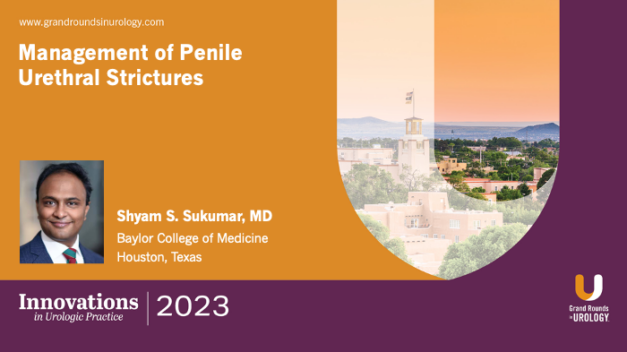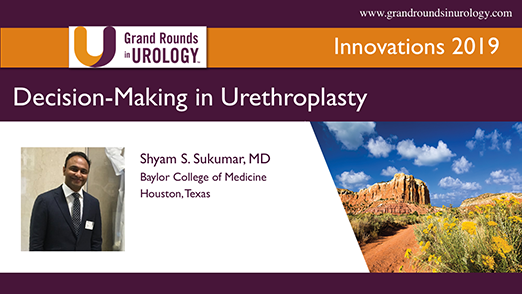Management of Penile Urethral Strictures
Shyam S. Sukumar, MD, shares his insights on the management of penile urethral strictures. He begins by differentiating stricture management, where the stricture is being treated directly, such as a stricture caused by external trauma, from stricture disease management, where the stricture is a symptom of what is being managed, such as a stricture resulting from an infection.
Dr. Sukumar then reviews the indications for a diagnosis of a penile urethral stricture, and presents appropriate contemporary endoscopic and reconstructive options for penile stricture treatment. He cautions that the only appropriate endoscopic option is urethral dilation, and presents data on the pitfalls of urethrotomy and DVIU.
He then explores the reconstructive options for treating straightforward and complicated strictures. He presents an algorithm to determine the best treatment options between penile skin flaps, oral graft inlays, composite repairs, and staged reconstruction.
Dr. Sukumar concludes by presenting photographs of reconstructive treatments in action. He encourages practitioners to be familiar with multiple techniques, as there is no one-size approach to stricture management.
Read More

